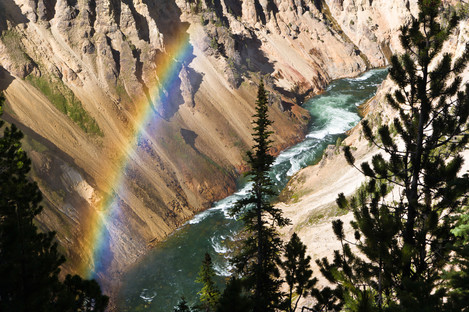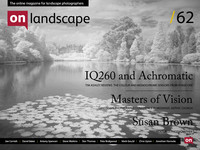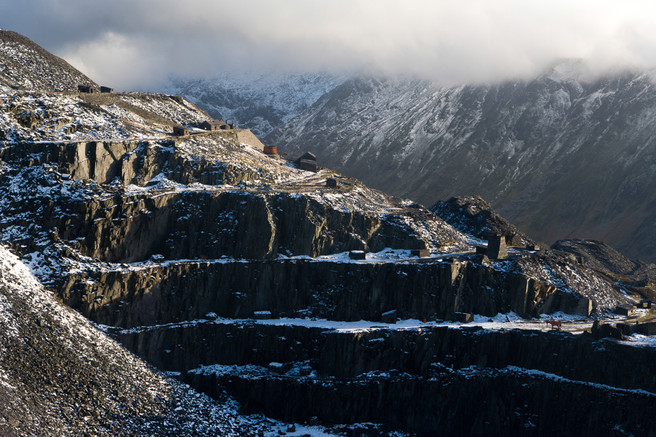Interview

Tim Parkin
Tim Parkin is a British landscape photographer, writer, and editor best known as the co-founder of On Landscape magazine, where he explores the art and practice of photographing the natural world. His work is thoughtful and carefully crafted, often focusing on subtle details and quiet moments in the landscape rather than dramatic vistas. Alongside his photography and writing, he co-founded the Natural Landscape Photography Awards, serves as a judge for other international competitions. Through all these projects, Parkin has become a respected and influential voice in contemporary landscape photography.
 Tim: Hi Steve, I believe this is your second Masters of Vision?
Tim: Hi Steve, I believe this is your second Masters of Vision?
Steve: That’s correct, the last exhibition – two years ago now – was my first. It’s very interesting to see how things have progressed. I think the perception of a photograph is very fundamentally changed by where you view the picture. I was mentioning to one of the other exhibitors that if you put these images in a pile-em-high gallery on a high street the perceived value would be very different. Put them in an amazing minster like this and have the organist play some stirring music and you’d have to be made of stone to not be spiritually stirred by that experience.
T: Which exhibits have stood out for you as you’ve walked around
S: I’m a big fan of Dav Thomas’ work. He’s one of the real talents in the UK landscape market and the thing I love about it is that he tackles what I think is one of the hardest subjects, trees and forests where complexity is everywhere and simplicity is nowhere for most photographers. He seems to eke out amazing simple, dynamic, moving compositions from scenes that most people would walk past.
T: Do you have the book?
S: I have a review copy that Dav kindly sent to us. I think I might well buy a copy as well. One of the thing that strikes me about this experience of being at an exhibition is just how important it is to support photographers. In our history most of the master painters were supported by patrons and I think patronage is an increasingly important part of how we can support photographers in a time when traditional revenue channels are starting to dry up a little.
T: It struggles as an art form anyway in terms of respect. Photography in general and landscape in particular.
S: I think so. One of the nice things about this type of event is that we get to spend a bit of quality time talking over different aspects of photography and we’ve talked about this difference between the US and the UK market and where does that stem from. I think fundamentally for me part of it is the US has been introduced to their own country through photography. Their history is in photography. Whereas here in the UK we’ve been introduced to our country through Constable and Turner and the great painters. And the original of anything is always more valuable, be they the original Levis or whatever. I think it’s the same thing, it’s harder to knock the original source of something off it’s perch.
T: Do you travel to the US much?
S: Yes I’ve been very lucky, a lot of my photography has been based around books that I’ve been working on in the travel genre. Landscape has obviously been part of that.
T: Was travel your background as a photographer then.
S: Yes. It came out of myself travelling and going on adventures. The first trip where I seriously took photographs was a nine month mountain biking trip from New York down to Chile. I thought I was being excessive when I shot 70 rolls of film over nine months. Several years later it was almost 70 rolls a day sometimes on some assignments. I’ve had many run ins with airport check in staff trying to get 200 rolls of Velvia through customs X-ray machine.
T: Thank heavens for digital when you have that sort of volume of imagery
S: Yes. It’s the equivalent of taking a Kindle instead of 200 paperbacks. But it’s interesting – quite a few of the pictures here, the blue crevasse in Argentina with my guide standing on the top of it. They were the pictures I shot on film instead of digitally and even now when I print them up there is something different about an image printed up from film. There is a different depth and emotional attachment to it for some reasons.
T: Any idea why that might be?
S: I think we’re very physical as a species and I think with digital everything removes us from the physical interaction with the process. As much as it was a pain carrying 200 rolls of film through customs I used to love opening up a new box of film, popping the canister, pulling the tail out and drawing it across. That’s a very tangible part of the process and now you have your memory card and I could do a two week shot without touching the card and it doesn’t look any different at the end.
T: From the range of images you’ve chosen to show could you pick a couple that you’re particularly happy with or have a connection with
S: I think anything that really attracts your own attention is something that is closer to you as a subject and so as much as I love the travel work I think the picture of the Dinorwig quarry in Snowdonia is one of my favourites. Before I moved to Brighton I lived in Snowdonia and I lived on the road going up to Dinorwig from Llanberis and so this was my playground. I used to spend hours on end exploring and going down the tunnels, running and mountain biking through area. So I saw it in lots of different light and conditions and I just always remember this particular day, it was just the onset of winter and light snow showers had just come through and there was some low cloud over Snowdon in the background. I’ve always loved this juxtaposition of Dinorwig the quarry against the Snowdon range in the background because the Dinorwig quarry is an amazing thing in itself, this mountain has pretty much been removed by man, and so to have this mountain that was there and no longer is apart from a fascinating quarry up again one of the most beautiful mountains in the UK; I’ve always loved that stark contrast of man and nature together. It’s a mysterious place for me.
T: I used to work there for a while so it has all sorts of different connotations for me. I worked as an engineer on the generating station
S: We used to hear that generator kicking in and the rumble of the pumps in the middle of the night as you’re in bed.
T: And what would you choose as your second picture
S: I think one of my favourite places from the travels that I’ve been on was definitely Yellowstone national park in the US. There are few places on the planet that are truly non-earth like and I think this is one of those places where you are instantly transported; You could be on another planet because the landscapes and geothermal activity is extraordinary. It’s not just the odd geyser popping up here and there, it’s stunning colours, amazing scale to everything as well. The picture of the Rainbow river was just one of those pictures where I was really hot and really tired and really didn’t feel like doing much more trekking. I took it when I was out working on a BBC book called “Unforgettable walks to take before you die” and I was at the point where I thought “this is the point where I will die” because I was so hot and so thirsty and there is this big ladder stepway which goes right down into the bottom of the valley and they warn you at the top about how many steps there are, typical US health and safety. I’m thinking I’m so hot and bothered but maybe there is something down there. So I go down and I’m on my own because everyone has turned back at the sign, and I get such an intimate experience of the landscape. Then you see this amazing green river cutting through this barren, brown landscape. Where I dropped down at the bottom of these steps there is a big waterfall as well and just the spray from the waterfall creates this fantastic permanent rainbow. Then it was a case of desperately trying to fit a composition out of a very heavily tree lined bank and not being able to maneuver into just the right position.
T: It’s interesting that a lot of these classic views are being lost because of growing trees and they can’t cut them down without a lot of legal work. Ansel Adam’s Snake River is overgrown for instance.
S: I think that is a good thing. I think landscape can quite often feel lifeless and unchanging. No landscape is asleep though and I love the idea that things change so when you go back to the Rannoch Moor tree you have to work at a picture again. All those pictures of the trees in picture libraries are now not relevant – I bet people still use them though!
T: We’re asking everybody a final question – who would you like to see as the next Master of Vision
S: One of my favourite photographers and somebody who has several images that I think are world class is Hans Strand. I came across his work several years ago and I was truly moved both by his intimate understanding of what he was photographing, the subject matter, but also his technical mastery of it as well. I was lucky enough to have a interview him and I remember particularly about his aerial work and I remember asking “How do you control all of these elements in an image when you are in such a dynamic situation” and him saying to me “Once I see something that I want to photograph, all I do is look at the corners, once the corners are right I take the photograph. It’s all about the corners of the frame”. There are several of his pictures and one particular of his that is my favourite image of a green river in winter and the banks are covered in this thick fresh snow and a boulder caked in snow. The lines and the movement are extraordinary. I’d be booking my ticket early if Hans was the Master.
T: We’ll see what Pete can do.. thanks


